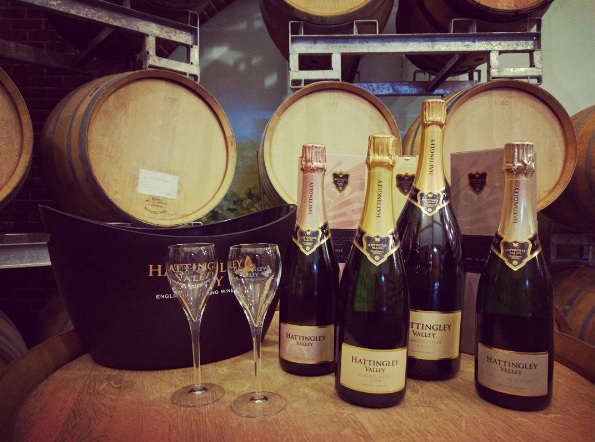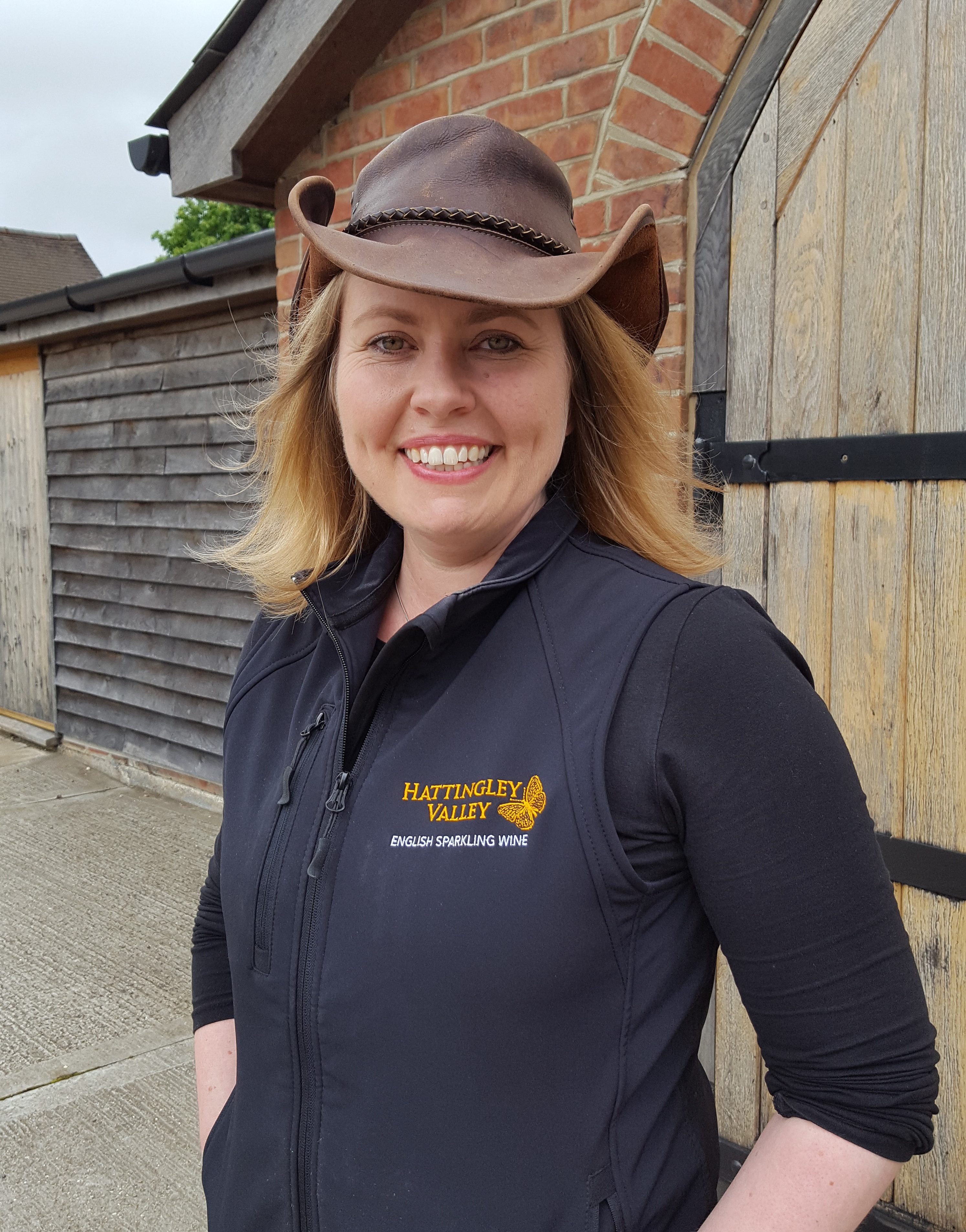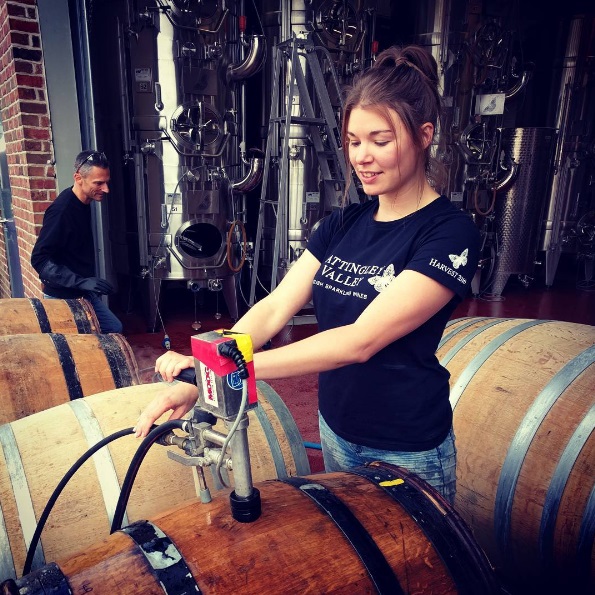
“Sparkling wines such as those made by [Hattingley Valley] have really put English vineyards on the world wine map.” Jancis Robinson
Wine surprises us all the time but there are some things you just don’t see coming. At the turn of the millennium, when we first discussed importing German wines, even the Germans laughed. These days Mosel Riesling fits as snugly in Aussie dining culture as beetroot in a burger. Even so, we probably thought Épernay was as close as we’d get to the English wine frontier.
That all changed when an ambitious, charismatic and far-sighted producer from Hampshire got in touch. The incredible trajectory of the best English wines hadn’t escaped our attention – nor, of course, had the fast fame of Hattingley Valley as one of the leading lights.
As always, what matters is quality and relevance of the wines. Are they seriously that good? And do they really have a place? The verdict first time we looked was, as they say in Britpop circles, definitely maybe. Looking closer at the logistics and playing out the future scenario, we did what everyone feels they have to do and chucked them in a line-up with Champagne and other top sparkling wines. To win their place on the list, they have to be at least as good as Champagne as well as bringing to the table something of their own – an appealing English essence, perhaps.
 The considered conclusion? This is a must. The wines have bright, clear, crisp fruit, a subtly fragrant grassy tone and searing acidity that’s been coaxed into seamless balance. The barrel ferments and lees ageing have likewise been judged perfectly for texture, complexity and overall integration.
The considered conclusion? This is a must. The wines have bright, clear, crisp fruit, a subtly fragrant grassy tone and searing acidity that’s been coaxed into seamless balance. The barrel ferments and lees ageing have likewise been judged perfectly for texture, complexity and overall integration.
Hattingley Valley was established in 2008, when Simon Robinson planted the first south-facing site. He and “extraordinarily talented” (says Matthew Jukes) winemaker Emma Rice then planned the modern, eco-friendly winery in Wield, which was completed in 2010. It released its first wine in August 2013, and a year later was declared to have made the world’s finest vintage rosé in the Champagne and Sparkling Wine World Championships – a competition led by Tom Stevenson, the man regarded as the world’s number one Champagne authority.
The wines have gone on picking up accolades and trophies like they’re going out of fashion, showing both their prowess and intent. Jukes calls the 2011 Classic Cuvée “one of the nation’s greatest wines” while the 2013 Rosé impresses with its “sublime flavours and incredible class”. That same wine won gold and best in class at this year’s Champagne & Sparkling Wine World Championships, as did the 2011 Blanc de Blancs.
Hattingley Valley is a fresh face in the world of wine, as well as a brand-spanking new presence here in Australia. But it’s easy to see why Jancis Robinson is “particularly thrilled” by the dramatic progress made by the English wine industry over the past few years. “I love the fact that English sparkling wine is (a) made with such competence and consistency nowadays and (b) that it has its own discernible, ultra-refreshing, hedgerow-in-a-glass style,” she adds. For sure, climate patterns, maturing reserve stocks and advances in vineyard and cellar – allied to ancient chalk slopes – paint an alluring picture for the future of English fizz. It’s time to take the plunge.

2013 Hattingley Valley Classic Cuvée RRP $80
 Chardonnay 48%, Pinot Noir 33%, Pinot Meunier 17%, Pinot Gris 2%. Acidity 8.3g/L and residual sugar 9g/L.
Chardonnay 48%, Pinot Noir 33%, Pinot Meunier 17%, Pinot Gris 2%. Acidity 8.3g/L and residual sugar 9g/L.
2013 was unseasonably cold in April and May, which delayed budburst by two weeks. Then there was very hot weather throughout July. The successful flowering enabled healthy fruit set which led to good yields across all the Hattingley Valley sites. Harvest started on 2nd October and ended on 5th November. The grapes achieved good sugar levels with sufficient acidity for premium sparkling wine.
After the grapes were harvested, 25% of the total blend was barrel-fermented in three- and four-year-old white Burgundy and Bordeaux barrels, giving the wine lovely texture and richness. The wine spent eight months on its fermentation lees. There was no stirring or addition of sulphur dioxide, with occasional topping up. The wine spent 12 months ageing on lees with a further two months on lees after disgorging.
The 2013 Classic Cuvée is pale gold in colour. It has a well-developed nose showing a hint of autolysis with some subtle oak character. The balanced palate has crisp acidity and fine mousse. It has delicate toasty characteristics from the ageing on lees, while the gentle oak adds complexity.
Toasty, yeasty scents with burned butter, honey, candle wax and stewed apple/pear scents. The palate has a slippery richness set around the core of firm, feisty acidity. Flesh falls off the bones of the wine in creamy drips with zesty bubbles fighting hard. It’s a lot going on, complex you could say, but doesn’t quite feel coherent in its expression. Perhaps another year or so..? 90 points. Mike Bennie, The Wine Front December 2016
White fruit, salty finish. Simple but bright and well defined with good core density. 16.5/20 Richard Hemming MW, jancisrobinson.com May 2016
2013 Hattingley Valley Rosé RRP $90
Pinot Noir 59%, Pinot Meunier 36%, Pinot Précoce 5%. Acidity 10.6g/L and residual sugar 9g/L. The 2013
Rosé was blended from the finest Pinot Noir and Pinot Meunier parcels with approximately 10% of the blend having been fermented in four- and five-year-old Burgundy barrels. Before tirage the team blended the base wines with 5% red wine made from Pinot Précoce to give a delicate soft pink colour and some vibrant red fruit flavours. The wine spent at least 18 months ageing on lees in the bottle before being disgorged with 8g/L dosage. Subtle and delicate in colour, this is an elegant rosé with an abundance of red fruit and fresh acidity, supported by fine toasty notes developed by ageing on lees in the bottle.
This wine has some bite, in the best possible sense. Acidity is ultra perky, it’s all red apple and white strawberry in the palate with a toothsome chomp that sits amongst the vibrant fizz of the wine. Fragrance is on point; red berries, vanilla, smoke. The wine is powerful, racy and very refreshing. The finish is so good – like a sip of fresh grapefruit juice. Those who like labels would call it ‘an excellent aperitif style’. And it is. 94+ points. Mike Bennie, The Wine Front December 2016
Rather delicate red fruit. Very crisp and zesty and super-tight. Finesse in texture and purity. Really fruity and long and zingy. I think this has more to give, given time, though I have not tasted older vintages to be able to support this expectation. 16.5+/20 Julia Harding MW, jancisrobinson.com May 2016
2011 Hattingley Valley Blanc de Blancs RRP $125
100% Chardonnay. Acidity 12.5g/L, residual sugar 10g/L. The best of Hattingley Valley’s Chardonnay parcels were gently pressed as whole bunches in the Coquard press, which gives a very clean and soft cuvée juice with fewer phenolics. Approximately 10% of the wine was fermented in old Burgundy barrels and no malolactic fermentation took place to ensure that the zesty acidity shines through. The wine spent eight months in tank and barrel before undergoing secondary fermentation in the bottle. It then had four years’ ageing on its lees in order to soften the acidity and gain lees-aged character. It spends at least five months on cork before release.
This wine has a lovely deep gold colour with a green hue and a fine mousse. The nose has delicate white fruit that gives way to a rich, toasty and honeyed charm. The palate is beautifully harmonious and complex – ripe apples with a crisp yet soft acidity that is balanced by a hint of oak influence. It has a rich and rounded mouth-feel and long finish – as well as great ageing potential.
Hattingley Valley are one of England’s best-known sparkling wine producers, sourcing from some 25-or-so hectares of grapes, and arguably England’s largest contract sparkling wine producer. England has a relatively long history in serious sparkling wine production, and is quickly gaining attention in influencer circles for the interest and personality of these wines. Acidity, searing, tight, bright, is endemic in the wines, making them quite unique in shape and form. Fascinating to see them start coming into the Australian market, and should be on the ‘to do list’ of sparkling wine and Champagne lovers.
Beautiful perfume of lemon, preserved lemon and fresh laundered sheets. That feeling of freshness washes over you. The palate is gently creamy, shows a barely there kiss of savoury nuttiness, with the star of the show a bristling trim of chalky acidity that keeps the wine racy, punchy and invigorating. Bubbles are wild and foamy around it. It’s a lovely thing to drink, and blows the wind through your hair as you do. 93+ points. Mike Bennie, The Wine Front December 2016